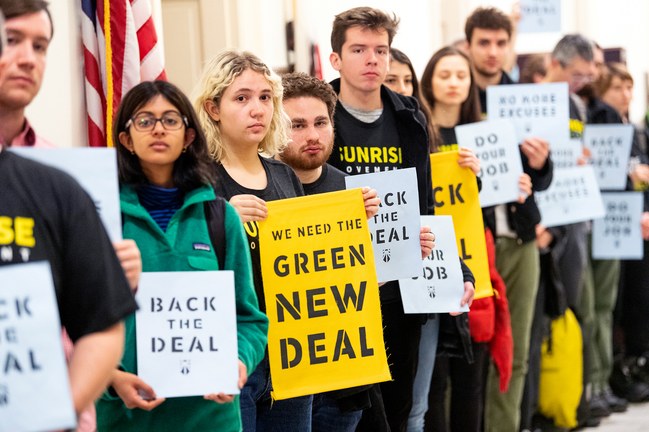- About
- Topics
- Story
- Magazine
- In-Depth
- Picks
- Opinion
- News
- Donate
- Signup for our newsletterOur Editors' Best PicksSend
Read, Debate: Engage.
| March 25, 2021 | |
|---|---|
| topic: | Global Warming |
| tags: | #Greenland, #sea level rise, #global-warming, #CO2 emissions |
| located: | Denmark |
| by: | Emanuela Barbiroglio |
They focused on the GrIS for a few reasons. Firstly, the melting of ice on Greenland is expected to be the main contributor to sea-level rise by the end of this century. Therefore, it is critical to better understand how the GrIS has responded to past warming events. Secondly, many well dated geologic constraints of past ice margin change were available, which made the island (particularly in the South West, the study had been conducted) the best location to do model-data comparisons. Thirdly, the area is a bit easier to model, as there is limited ice-ocean interaction and it would be difficult to do simulations otherwise.
Through a multidisciplinary approach that mixes glacial geology, ice sheet modeling and paleoclimate reconstructions, the group of researchers placed GrIS rates of mass loss in a geologic (long-term) perspective for the first time in history.
“There were plenty of important moments. For one, each individual procedure all had their individual successes,” Cuzzone remembers. “But we really made strides when we were able to combine paleoclimate reconstructions with the ice modeling and compare the simulated GrIS history to the constraints from the glacial geology. At that point, the story started to really come together.”
The historical perspective gave them insight into how atypical our current changes are and how atypical projected future changes might be. “I was surprised to see just how anomalous our future changes might be,” said Cuzzone, “depending on how much Greenland warms in the future, in the context of long-term change. And the rate of this change is striking when compared to past warm periods.”
Over the project timeline, much of their work was spent making the model efficient and suitable to simulate ice flow over these timescales, which was rather difficult. “Of course, our model is not perfect and some processes are either simplified or not included at all,” Cuzzone explains. “But we now have an approach to build off of for future efforts and we plan to add complexity as we continue forward.”
The main implication of their conclusions is that Greenland is changing and it is not doing so in a reassuring way. “We are approaching a point this century where rates of ice mass loss will exceed anything experienced for the last 12,000 years. What is more alarming is the rate at which we have changed.”
How much ice Greenland loses in the future depends on how much the Arctic warms, which is a consequence of how much greenhouse gases we put into the atmosphere. The team’s results, as well as other studies, suggest that limiting greenhouse emissions will lead to less overall warming and ultimately less ice melt.
“This is still a question: what path do we take? Right now it seems we are on the high end of emissions and future warming scenarios. But our work indicates that curbing greenhouse emissions will likely keep Greenland from reaching worst case scenarios of change.”
Effects are going to be felt worldwide. “For the global community, areas vulnerable to sea-level rise will feel the effect of Greenland melting,” says Cuzzone. “Those not near sea-level will not be spared, however. As the Arctic changes, the global atmospheric and oceanic circulation will change, altering weather patterns and regional climate. So really changes in Greenland and the Arctic go beyond just sea-level rise. That is why we all should care, not just those who live near the sea.”
Yet, some questions remain unanswered around the future's melting rate and the impacts of the ocean for other regions in Greenland - which is where research is going to go.
“We hope to extend our work to model the whole GrIS and include feedbacks between the ocean and ice. We hope that this work will help improve our current understanding of how important ice-ocean interaction is across the GrIS, which should help us narrow down how much the GrIS will contribute to future sea-level rise.”
In spite of the evidence, Cuzzone doesn’t expect his research to push much political action. “But perhaps this work provides a talking point to illustrate just how anomalous our current and projected future changes might be,” he says. “It really illustrates how anomalous change across Greenland is and we know this is due to greenhouse warming.”
Emanuela Barbiroglio is a Brussels-based journalist focusing on environmental issues and EU politics. Her work has been published in Al Jazeera, Euronews, Forbes.com, and The Beam, among other publications.
This article has been published as part of a content collaboration between FairPlanet and The Beam.
Image: Jason Briner via the University at Buffalo.
By copying the embed code below, you agree to adhere to our republishing guidelines.



